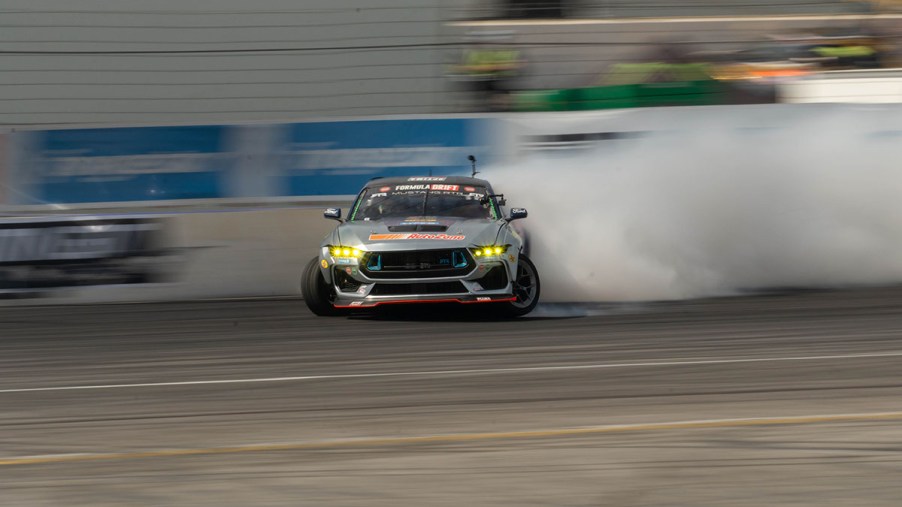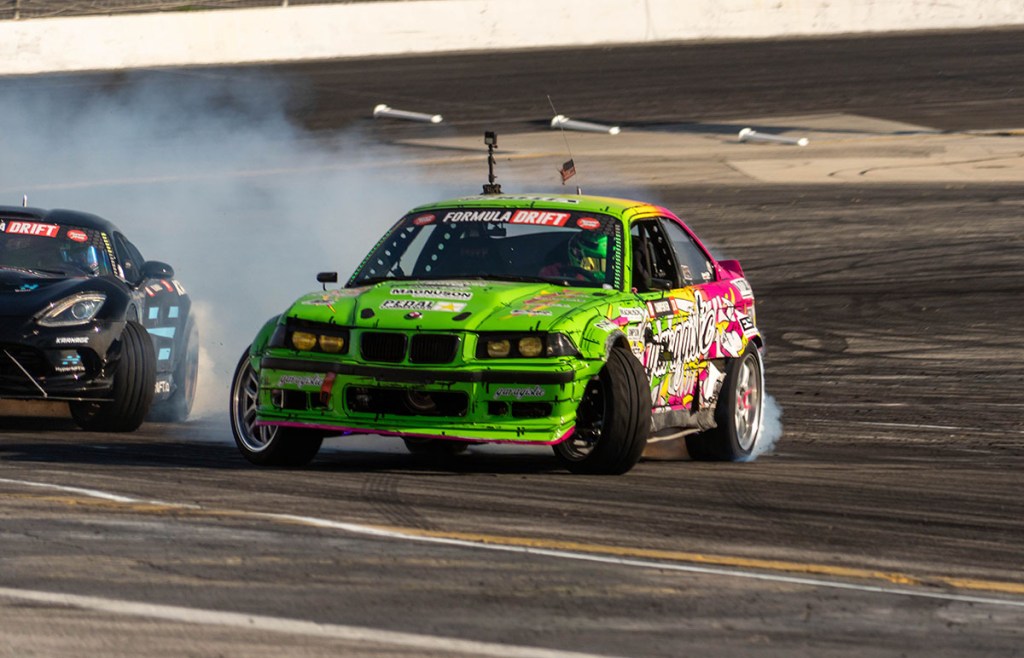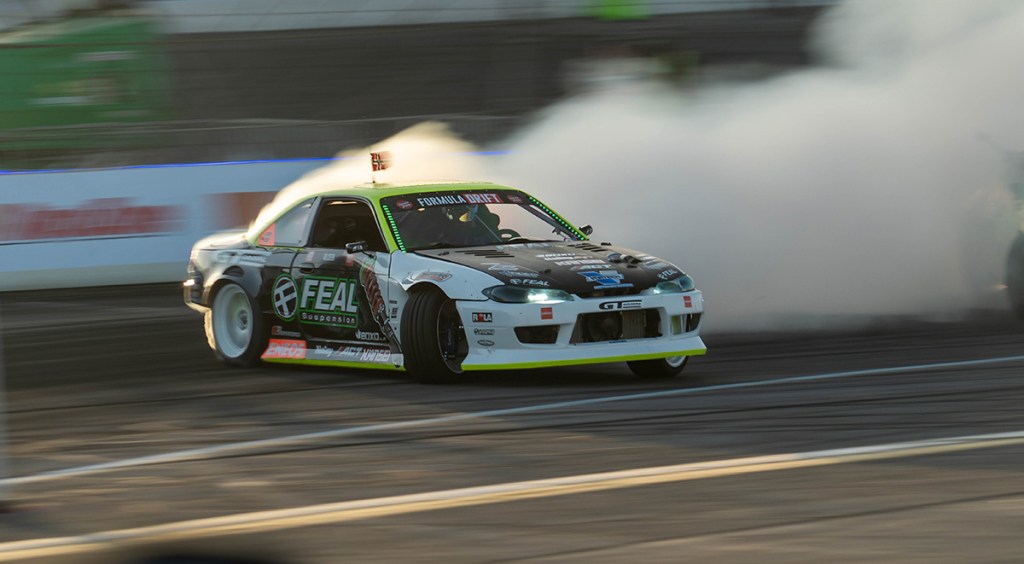
Why Do So Many Drift Cars Use V8 Power?
Drifting is one of the fastest-growing motorsports in the world. Whether you’re in the U.S., Japan, New Zealand, or Australia watching either amateur or professional drift cars, you’ll find that a massive amount of them have V8 engines under the hood. That begs the question: why is a V8 so good for drifting?
V8s are reliable, have beneficial torque curves, and are relatively affordable for drifting

Certainly, there’s no shortage of folks who think the LS swap is played out. However, there is a reason so many folks plop an LS under the hood of virtually every car in existence. They are relatively inexpensive with the availability of LS-based truck engines like the 5.3 and 6.0-liter offerings found in Chevy trucks and SUVs. Additionally, they have a myriad of available aftermarket performance upgrades that can soar power output well north of 1,000 horsepower. Most important for drifting, though, is the power band.
V8 engines typically see their peak torque figures very low in the RPM range, which makes breaking tires loose easier. Moreover, the torque curve on V8 engines usually sees a peak and sustains throughout the entirety of the rev range. Effectively, this gives a near-instant throttle response effect that makes sideways car control much easier.
A phenomenal case study for V8 power in drifting is the Team RTR Mustangs. Drivers Vaughn Gittin Jr, Chelsea DeNofa, Adam LZ, and James Deane are top-tier professionals in Formula Drift who pilot these monster Mustangs. They have naturally aspirated Ford V8 engines that, with nitrous, put out 1,300 horsepower. Without having to wait for a turbo to spool, the ferocious Mustangs have an impressive and virtually instant power curve. In fact, DeNofa took first place in the Formula Drift championship in 2023, piloting one of these Mustangs.
What’s the best engine for drifting?

Whether you’re just starting and shopping for drift cars to start with or looking to build a competitive pro car, a V8 is a solid option. Something like a Chevrolet 5.3L V8 offers a relatively tame starting horsepower of under 300 horsepower, which is by far and away enough to learn with. The advantage, though, is the ability to easily add power to said V8 as your drifting skills progress.
Many drifting enthusiasts will discourage folks from starting with a V8 and recommend a low-horsepower four-cylinder car to really create muscle memory and develop good habits and fundamentals. However, cars like the BMW 3 Series and Infiniti G35 are industry-standard starter drift cars at this point. They’re already pushing near the power levels of a stock iron-block LS-based truck engine.
Overall, the V8 is a staple of drifting for good reason. It has an incredibly useful power band for drifting, it’s relatively affordable, and it’s easy to add power with fairly simple modifications.





